Photography is really about light. Night photography is just like any other type of photography except you don't have the sun to help you light up your pictures.
Mixed Light
To start with, you generally have to understand "mixed light". Often in a scene there are two (or more) types of light. One might be fixed (moon light, city lights) and another is variable (fireworks, flash lights, on camera flash). The goal is to balance them. Ironically, balance rarely means equal - generally you want the exposure of one light to be roughly 1/2 to 1/4 of the other. A few examples:
Entrance
Here a cave entrace (outdoors) is balanced with the lights built into this cave display. Balance is achived by how much of the scene is shown - more of the cave (the yellow part), the less green outdoors shows. Here it was just luck that they were roughly the same brightness.
Beam Of Light From Ceiling
Here there is a fixed light source (the sun coming through) and a variable source (my flashlight back filling the scene). The flash light was on for about 4 seconds at the end of the scene to fill in the cave. If I had not used the flashlight, the cave would be too contrasty - you couldn't see the walls.
Tent With Night Sky
It took 6 minutes to get enough star/city light to get a sky filled in. The flash light filled in the tent in 6 seconds. This would be an easy photoshop fix (there is complete darkness between the sky and the tent) but I didn't do that - promise!
Perhaps the hardest example of balance. The city has one proper exposure (say 6 seconds at f8). The fireworks are variable in time but not aperature. If you open the aperature (say 3 seconds at f5.6) the fire works trails will burn, if it's too closed (say 12 seconds at f11) the fireworks will be too thin. Balancing this is hard.
Cities (30 seconds or less)
Cities have a little bit of everything in the for light. They are generally pretty simple to expose - you are balancing the city against another element - generally a sky or a foreground element. Generally you are trying to pick up as many colours as possible. Of course you need a tripod or solid support for any photo this long.
Fireworks (4 - 12 seconds)
One of the most fun types of night photography is taking pictures of Fireworks. I have a page of just fireworks photos, but here are some favorites:
Fireworks are a great way to burn film. The formula I use is f8 for 100 asa film with a 4 to 12 second exposure. The exposure is hit and miss - using the bulb feature on the camera and a cable release, open the shutter when it looks like the fireworks will be good and hold the shutter open for as long as you need to fill up the image. (A tripod is a must - a clamp works in a pinch. If you can't support the camera, don't bother). Blue fireworks are difficult to capture (they are dim) and green fireworks are generally the brightest. Ideally, you want to combine low and high fireworks in one frame, but they don't have to be shot at the same moment - just inside the 4 to 12 second window you have the shutter open. I shoot two to three roles of film each time I attend.
If you are using 200 speed film, use f11. 400 speed film, use f16. If you get the aperture wrong, the fireworks will burn in to much or be two dim - you can't compensate by longer or shorter time. Like anything in photography, once you get good, get closer. Here that means zoom in. We are still at f8, but now we are in the < 4 seconds range.
Sparklers (3 seconds)
Another fun pyrotechnic source of light is sparklers. They are often available with birthday cakes and at Halloween. I have a page from one experiment, but here are some favorites: Jer CircleJohn Name These exposures were about 3 seconds long at f16 on 400 speed film. (f8 on 100 speed film). The trick here was to use a flash set on rear curtain sync (the flash fires at the last moment before the shutter closes).
Campfires (6 - 30 seconds)
Campfires provide a nice light. The two pictures below are about 6 seconds in duration on 50 speed film at f1.4 - just enough to light up the people. (It was actually metered from the camera)
But it doesn't have to be that dark. You can use a bigger fire and mix other light sources. First, taking photos just after the sun goes down, you can pick up the residual light. Second, you can hide a lantern to light people up.
Flashlights ( 120 seconds )
Without a sun, you can leave the shutter open fairly long and compose how you want. This picture is a 2 minute exposure at f1.4 on 50 speed film. I set the camera on a tripod and with the shutter open used my flashlight to paint in Andrea. Once I painted here once, she moved and I painted her again. It was lots of fun! No on board flash was used - the light is hard, bright and difficult to control.
Star Light ( 300 seconds )
Stars aren't very bright this far away. These two pictures are 5 minute exposure at f1.4 on 50 speed film. Unfortunately, city lights often overwhelm stars so getting a good photography is often an issue of geography. Orion Above TreesStars Above House The trick is to keep the aperture at maximum - stopping down will make most of the stars disappear. The longer the exposure, the longer the trails.
Moon Light ( 300 seconds )
While visiting the Grand Canyon, I decided to take a night photo - roughly 5 minutes at f4 on 50 speed film. While I couldn't see very well, the film picked up something I missed - a forest fire on the north side of the valley. The smoke has descended into the Canyon - there a was a park notice the next morning. I haven't had another chance to use moon light, but I'll keep looking.
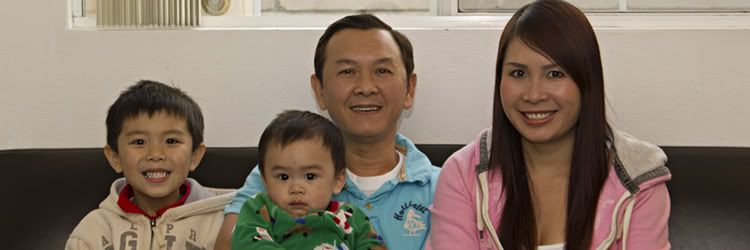
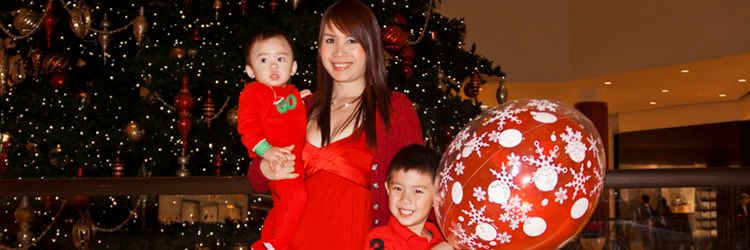
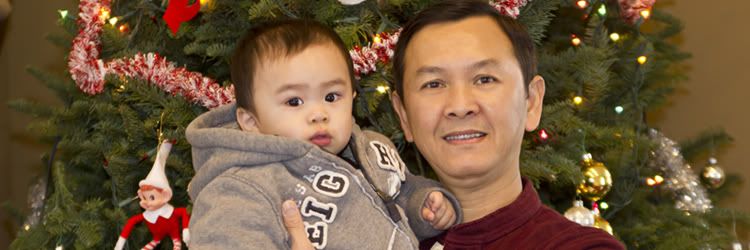

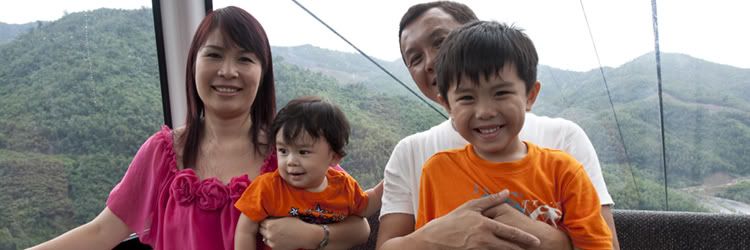
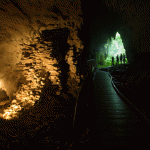
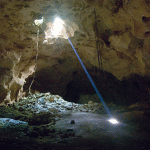


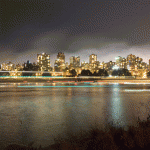
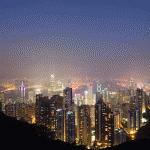
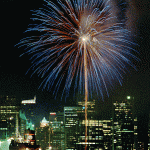



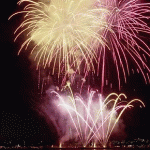
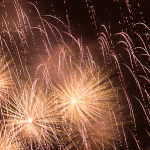

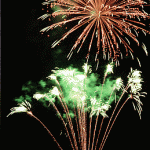

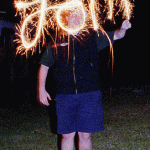
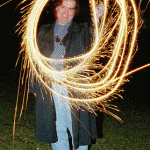


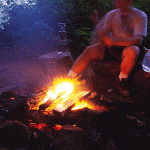
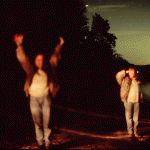
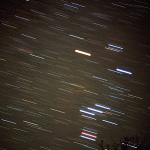

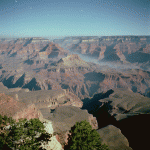

0 comments:
Post a Comment